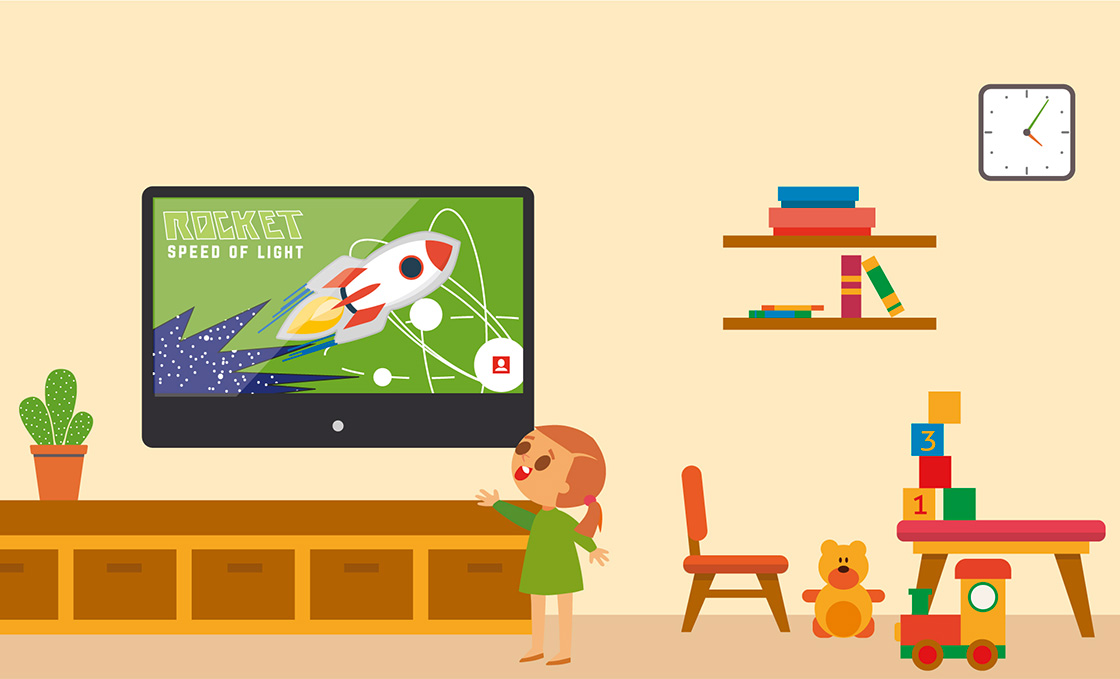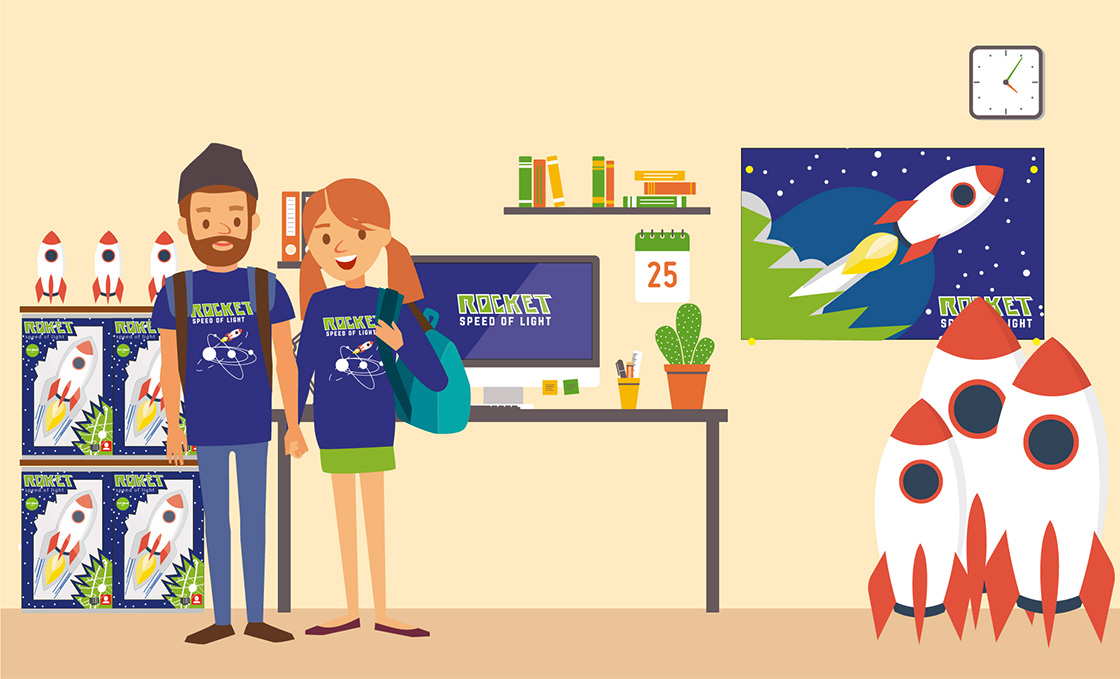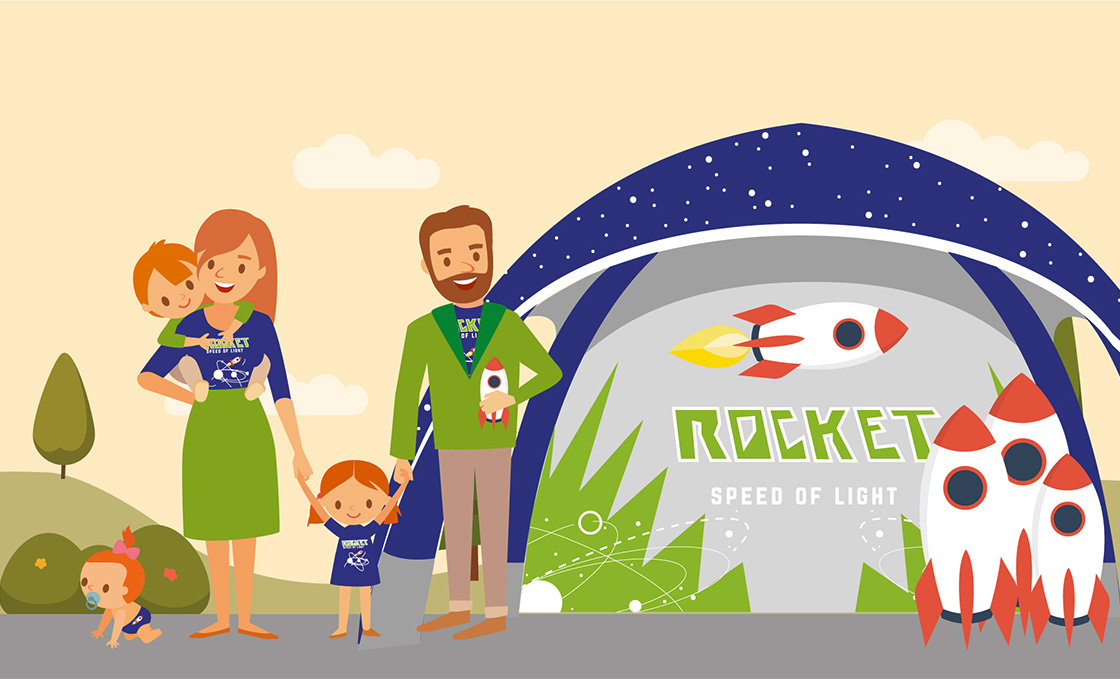
Shopper of tomorrow
By: Maud Rocher, Senior Consultant at Full Moon Kids
The earlier children are tied to a brand, the more likely they are to buy that brand's products themselves in adulthood. Brand loyalty therefore describes an emotional attachment to a certain brand on the relationship level (consumer) and the re-purchase behaviour on the transaction level. Until such brand loyalty can be achieved, the very first milestones in the customer loyalty cycle from consumer to shopper are initiated.
Initially, a child is made aware of a brand. This is usually done by high-reach communication measures such as advertising or TV and radio advertising, which impulsively convey certain added values of a product and thus arouse initial desire. Once this has taken place, the child's personal involvement must be promoted via further brand contact points. The child learns to understand what the brand and its products have to do with itself. By satisfying a wide range of children's needs such as play instinct or curiosity, the personal relationship to the brand is continuously improved. An important task is to be continuously in the child's mind-set through the interaction of various communication channels (cross-media campaign) and to anchor the brand positively in the long term. The focus of every brand is clearly on the fact that it is really trustworthy, responsible and authentic towards the young target group.
If children are highly involved and enthusiastic about a certain brand, they will put the products on their personal wish list and activate the adult as shopper to buy products of a certain brand several times at best.
The distinction between shopper and consumer is a major differentiation compared to the 'normal' adult buying process. The actual consumer of a product will not be able to make the purchase independently at a young age, but must always encourage an adult to buy. So if a brand manages to get children to encourage adults to buy a branded product several times over, the probability increases that young consumers will buy the product themselves when they acquire their own business skills or even give it to their own children later on.
In order to ensure that a child remains loyal to a brand for many years, it is necessary to use a combination of different marketing instruments that are specifically designed to meet the needs of children.
As one of six senior consultants, Maud Rocher has been responsible for strategic consulting and campaign development for Full Moon Kids GmbH, Stuttgart, for three years. The business administration graduate with international toy experience and mother of two children is responsible for Kosmos Verlag, Lego and ToysRUs, among others. At Full Moon Kids, 35 experts know all about communication with children, young people and families and the educational sector. The agency belongs to the Full Moon Group
The transformation process from consumer to shopper runs in four steps.
Emotionality
The basic prerequisite for a strong relationship level is a high level of emotionality in the marketing measures as well as thematic relevance for a specific target group. This means that positive emotions should be triggered and the target group can only be addressed by topics that have a real connection to the target group. One tool for designing marketing measures in an emotional way is storytelling, for example. Here the child is immersed in its own fantastic brand world. We cooperate with the international market research company Kidz Global to select the right communication tools and create guiding ideas for a targeted approach to the target group.
Action First
Children have a pronounced urge to move: they love to romp, run around and get worked up. They appreciate the experience with and directly on people. In line with this insight, we have implemented a Europe-wide roadshow with the Nickelodeon TV station to offer young consumers a real and playful platform - true to the 'Day of Play' idea of switching off the TV, going out and playing. The idea behind this is an outdoor adventure playground where the little ones can join in, romp around and have fun together with their families. Live communication optimally covers the children's urge to experience and move around and creates an emotional experience through multi-sensual communication, which the young target group will remember with pleasure. Even though marketing activities are increasingly taking place in the digital realm, the entire spectrum of live communication is the only instrument that makes brands a real experience and tangible.
Digital Kids
Children develop into real digital specialists at an early age. In addition to TV, media use increasingly includes PC/laptop, smartphone or the game console. As media interest shifts more and more to the digital world, new formats are consumed in which influencers report on relevant topics. By means of tutorials even products in need of explanation can be made easily understandable. Content for children and teenagers on YouTube is booming and meanwhile reaches millions of viewers, especially when it is presented by YouTube stars like Julien Bam, Bibis Beauty Palace or the Lochis.
„Through brand contact points in early childhood development, first the adult is stimulated to buy by the child, later the young person becomes a buyer himself through positive brand experiences".
Opinion Former
Adults are important influencers and idols for children. Especially in early years, they are influenced by the attitudes, behaviour and attitudes of adults. Besides parents as the most important influencing factor, educators and teachers also play a significant role. While parents raise their children in everyday life, educators and teachers assume the role of opinion leaders in kindergarten and in the school environment. In this context, kindergarten and school as target group touch points represent a decisive added value. No other touchpoint brings together a specific target group as comprehensively and without wastage.
The instrument of educational communication and our cooperation with Klett Mint GmbH are based on this fact. In this way, knowledge of the educational market and know-how about the target groups, teachers, pupils and kindergarten children is developed. It is elementary to deal with educational communication in a very responsible manner.
That is why we also advise companies on how they can and may appear in kindergarten and school environments. In this way, brands can make a targeted and conscientious contribution to the education and development of children by conveying didactic content - from competitions to teaching materials and workshops adapted to the curriculum.
Edutainment
Especially in early years, children are very eager to learn and are happy to embark on the adventure of exploratory learning. They learn best in playful and unplanned situations, the so-called free play. They also need sensual experiences to 'grasp' new things. To be able to guarantee these approaches, experience tools are a good means. Through the immediate playful experience, the child learns in the long term. In addition to the conception and selection of suitable interactive exhibits, the choice of personnel also plays an important role. For an optimal contact with children and young people, we cast and train a specially selected pool of staff with previous pedagogical experience.
It should be noted that brand loyalty in early childhood can be promoted in the long term by using child-specific marketing instruments. By creating a variety of brand contact points within the framework of early childhood development, the adult is first encouraged by the child to buy the product, and later the still young person develops into a buyer himself through positive brand experiences.
For these milestones in the customer loyalty cycle, it is advisable to involve a specialist agency that has the legal and ethical know-how to convey true values to children and young people and to ensure an honest and authentic approach. In this way, the (early) childhood potential can be effectively exploited and the young consumers are optimally supported until they have grown into independent shoppers. In contrast to the adult target group, children are more diverse, demanding and honest. Even small differences in age can mean big differences in interest, whereas target groups come closer and closer with increasing age.
Source: new business no. 33 (14.8.17) www.new-business.de




